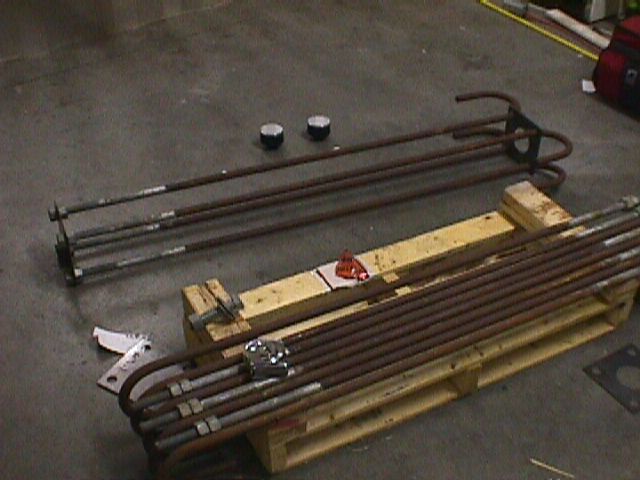
These pics show the building of the rebar structure and locating of the J-Bolts
Below are the "J-Bolts". These get imbedded in the concrete with the threaded (silvery) ends protruding above the foundation. The base of the tower attaches to these bolts.

Below is most of the roughly two and a quarter tons of rebar that was specified by the manufacturer. We wound up using about 10% more than specified.
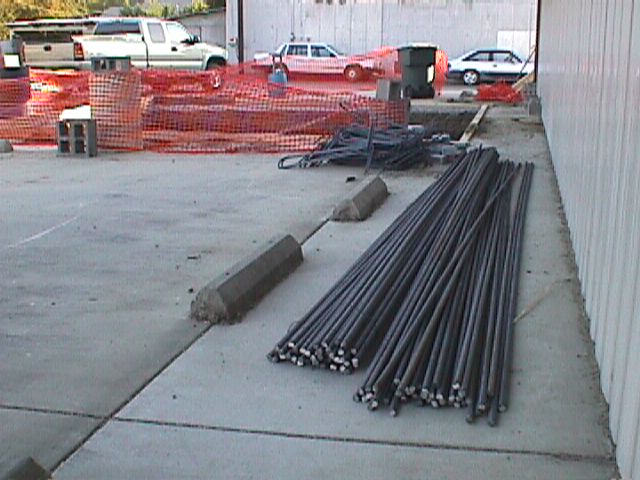
Small cement blocks called dobies are used to space the rebar away from the surface of the concrete (or above the dirt in this case, same thing.)
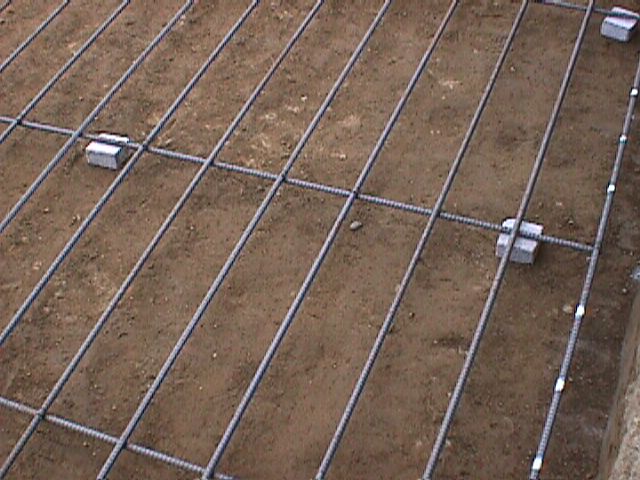
Here you can see how the structure is started, by laying out every third or forth bar (first layer) on the dobies, and then using those to support the first full spread. The missing bars from the support (first) layer are laid out on top of the full layer. The final grid is on 3 planes.
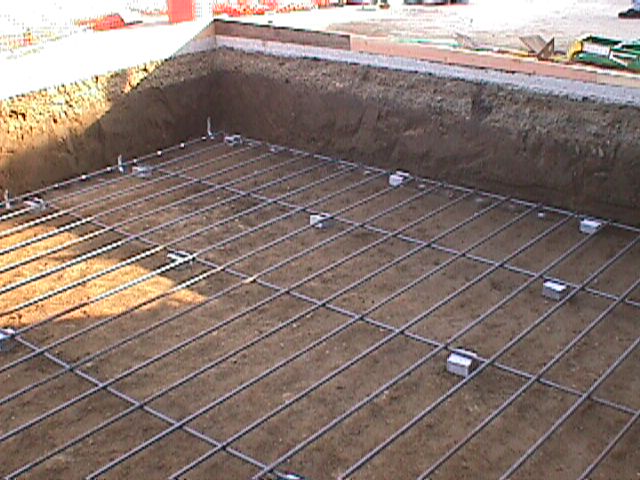
My brother Steve who came in from Michigan to assist. The other individuals in the picture should be recognizable to anyone who has visited our office.

Below is a close-up of a rebar joint. The next few pics show how rebar is fastened prior to pouring the concrete. The rebar is tied with wire; or plastic tie-wraps can be used. We used wire. This first pic just shows the joint with the wire sitting there.
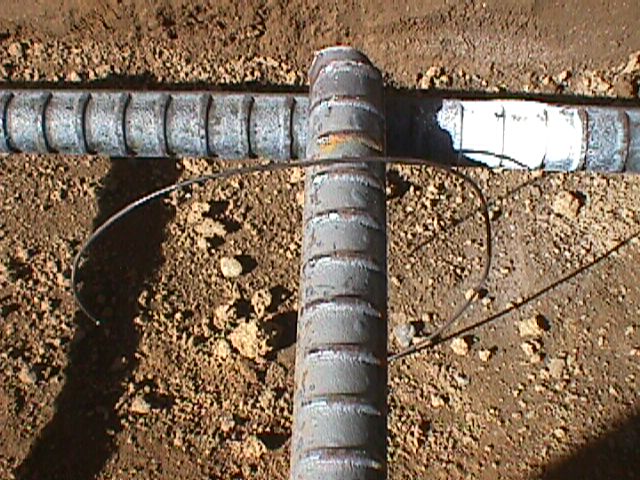
This next pic shows the beginning of the tying sequence. From here, the wire is wrapped underneath the other bar.
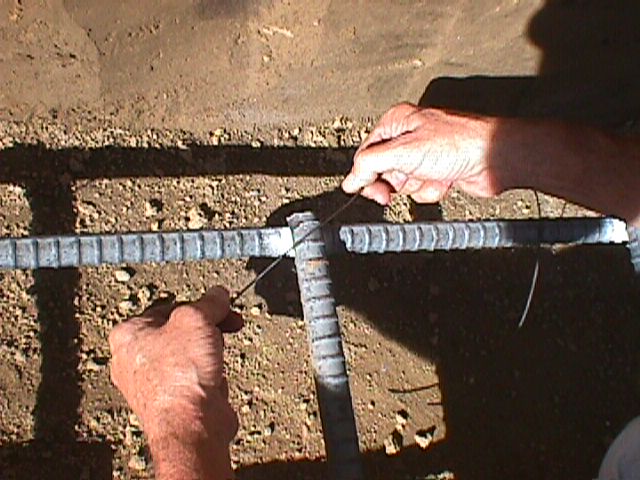
This pic shows the two ends of the wire after they were wrapped under the bar in opposing directions, around and back upward.

This pic shows how the wire is twisted on top. There are several methods of tying the wire, and you can choose your favorite method. We found that for the ends of the bar at least, this "criss-cross" method was best because it was less likely to fall off the end of the bar.
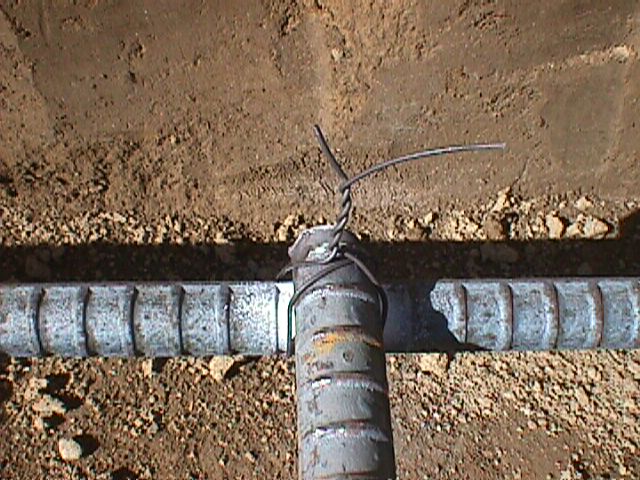
Here you see the pliers grabbing the wire to twist. The pliers must be pulled upward in a jerking motion while twisting in order to pull the bars together as best as possible. You don't want anything moving when you start pouring the concrete.
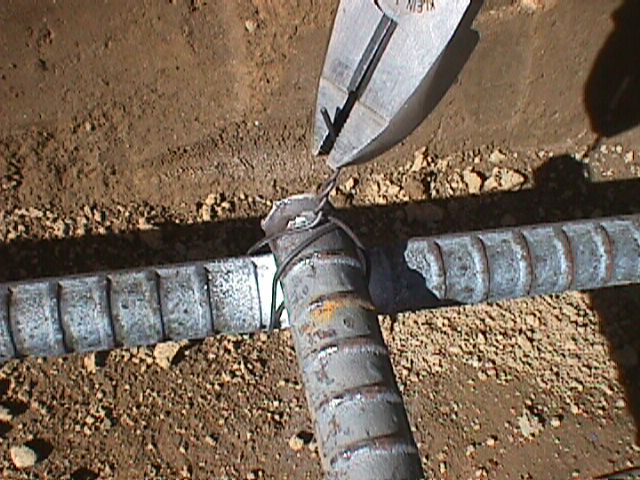
Here is the completely tied joint, twisted tight, cut off, and flattened down. You want to flatten the wire down for safety's sake. They'll punch right through the bottom of a tennis shoe if you don't, and it hurts.

This shows the first layer of rebar. There are two, each with 22 #7
grade 60 bars equally spaced each
way. You tie them where you see fit. It's better to tie too much
rather than not enough.
The little blocks that support it are called dobies and are there because the specification calls out that the
rebar must be covered with concrete at least 3"; no steel may be closer
than 3" to the surface of the concrete.
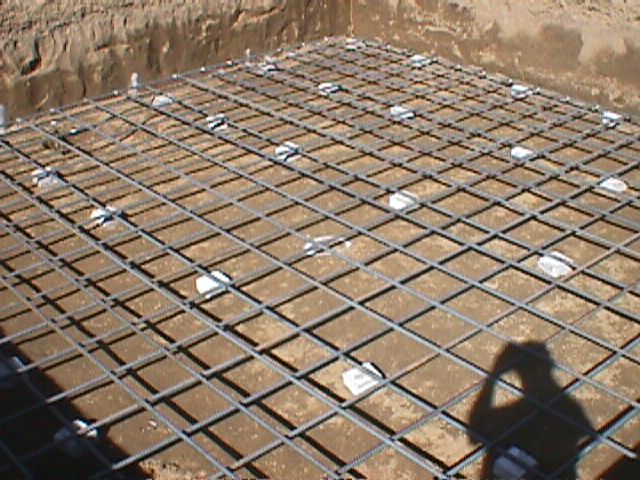
This is called a standee. These typically come from your rebar supplier and are bent per your specs. They get tied to the lower grid to support the upper grid.
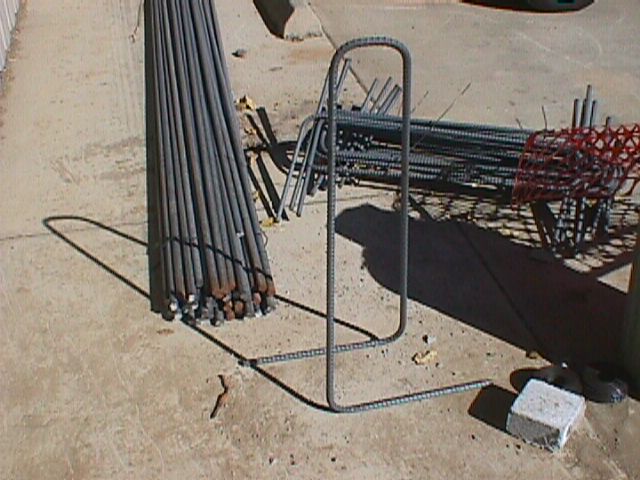
The next few pics show the standees being tied in place. You can also see the J-bolt sub-assemblies placed in approximate position. Small footings are dug under the lower grid to hold the base of the J-bolts.
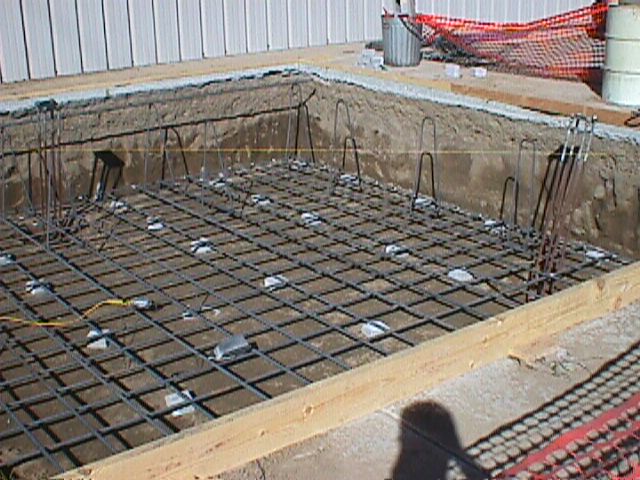
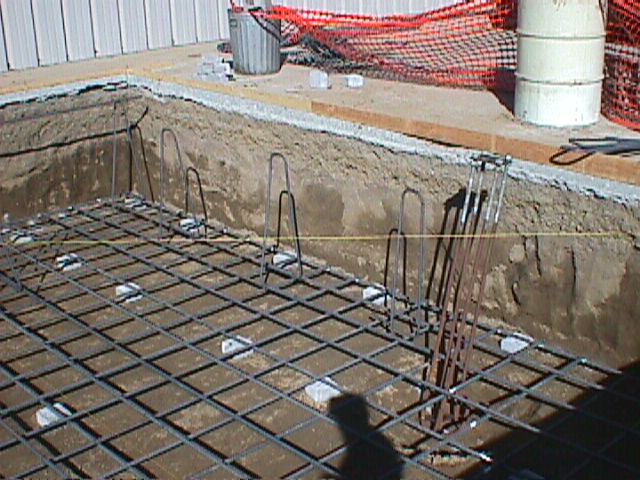
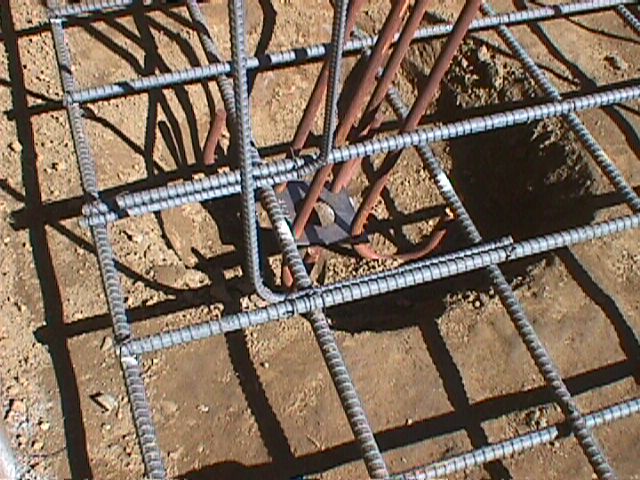
Once the standees are securely tied in place (we used 8 ties per standee, two on each plane, each leg), a piece of rebar is tied to the top of the standee. After a few of these are tied in place, the upper grid will be assembled on top of them in the same manner as the lower grid.
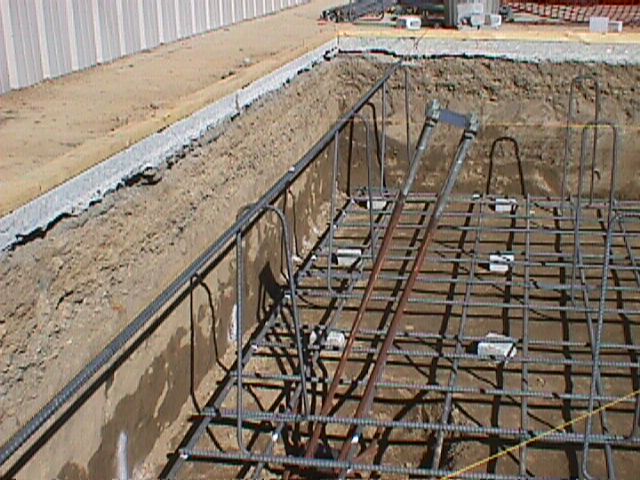
These next few pics show all the standees in position. Each will get a single rebar tied to it, and this will provide a base upon which the rest of the upper grid will rest. The concrete forms can also be seen here. Note the slope in the forms to accommodate the grade of the surface.
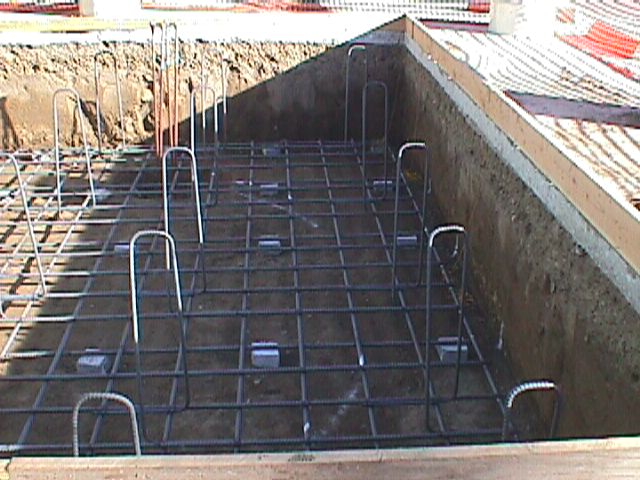

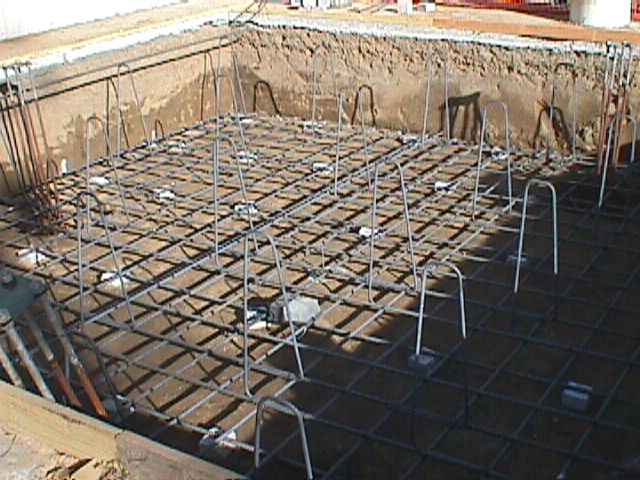
The pic below shows all bars in place, ready to receive the grid.
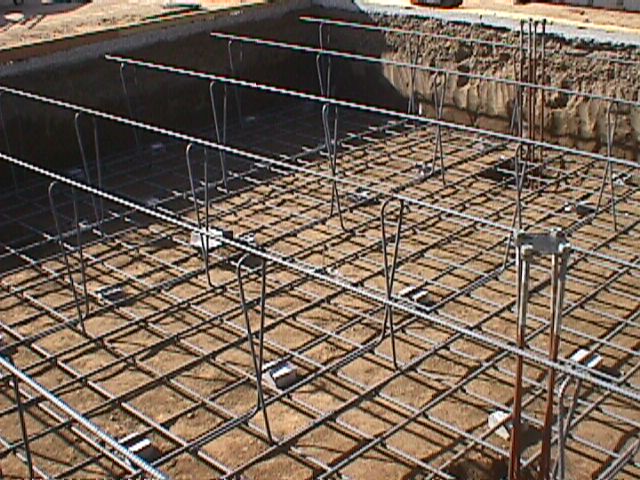
Below is the first layer of the upper grid of rebar in place.
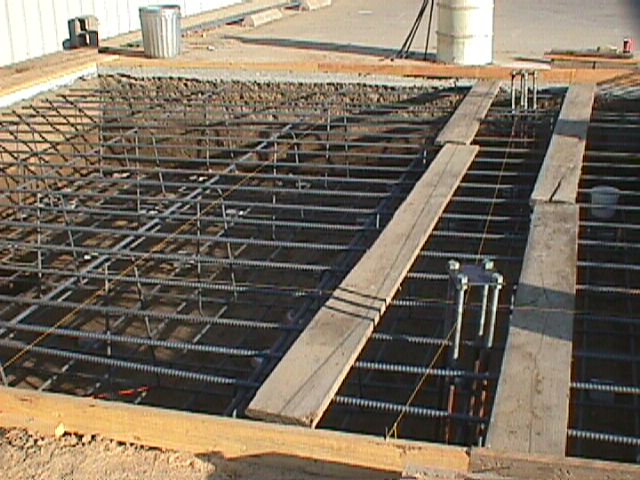
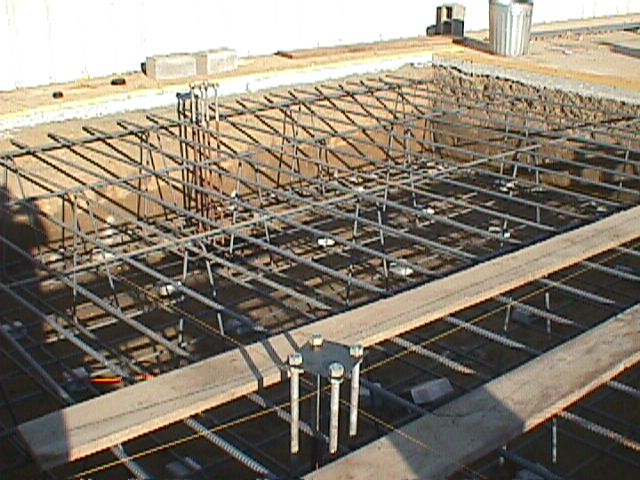
And God said, "Let there be rain," and there was a construction delay too. Good thing, I was getting way behind on other things.
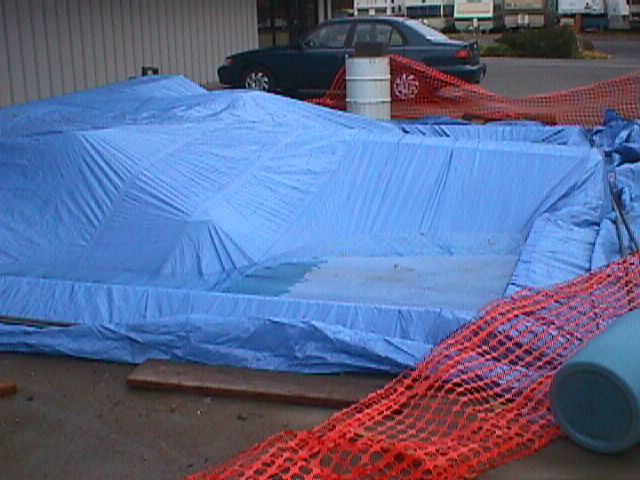
The rain pretty much lasted for a week.
-----------------------------------------------------
Back to it. All the rebar is done in this pic. Below is a shot from within the rebar.
Another angle, showing one of the J-bolt mounts.
This is a shot looking up at the center of the fixture.
J-bolt detail.
Upper J-bolt detail.
Complete pad ready to pour, with fixture in place.